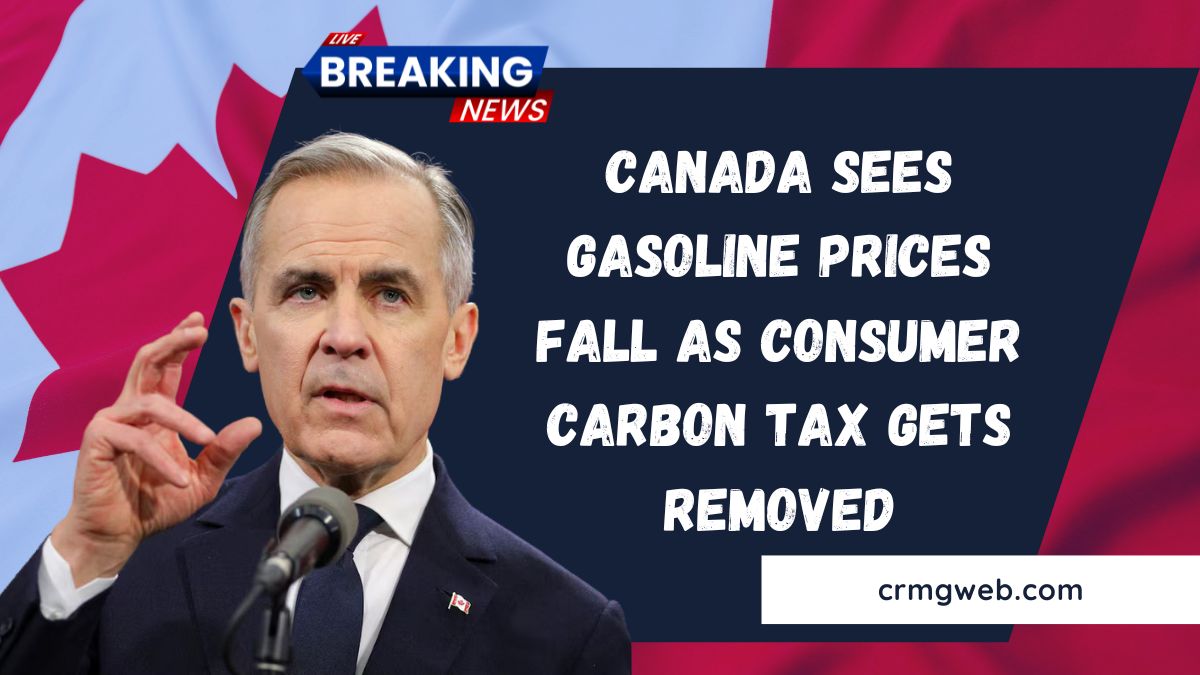Canadians are starting April 2025 with a bit more money in their wallets. As of this weekend, the consumer carbon tax has officially been removed, causing a noticeable drop in gasoline prices across the country.
With this move, drivers are seeing immediate savings at the pump—some as much as 15 cents per litre depending on the region.
Here’s a breakdown of what this change means, how much fuel costs have fallen, and what consumers can expect going forward.
What Is the Carbon Tax and Why Was It Removed?
The consumer carbon tax was originally introduced to encourage cleaner energy use and reduce carbon emissions by making fossil fuels more expensive.
However, after growing concerns about rising inflation, high fuel costs, and pressure on household budgets, the government decided to axe the tax starting April 2025.
The removal is aimed at offering immediate cost relief to consumers, particularly as the country heads into warmer months with increased travel and transportation demands.
How Much Have Gas Prices Dropped?
The elimination of the carbon tax led to instant savings at the pump. Here’s how gasoline prices are trending now:
- National average before tax removal: 155.2 cents per litre
- National average after removal: 143.6 cents per litre
- Estimated savings per litre: Up to 12–15 cents
Gas Price Change by Province
| Province | Before Tax Cut (¢/L) | After Tax Cut (¢/L) | Price Drop |
|---|---|---|---|
| New Brunswick | 158.7 | 143.7 | 15.0¢ |
| Ontario | 154.9 | 143.1 | 11.8¢ |
| British Columbia | 163.4 | 151.8 | 11.6¢ |
| Alberta | 147.2 | 136.5 | 10.7¢ |
| Quebec | 160.0 | 161.9 | +1.9¢ (increase) |
Note: Quebec is maintaining its provincial carbon levy, which is why prices slightly increased there.
What It Means for You
If you fill up a 60-litre tank, you could now save $7 to $9 per fill-up, depending on your province. Over a year, that adds up to over $500 in savings per household just on gasoline alone.
Additionally, lower fuel costs may help reduce the cost of transporting goods, which could also ease pressure on grocery and retail prices in the coming months.
What’s Next?
While the financial benefit is clear for drivers, the removal of the carbon tax brings up questions about how Canada will meet its climate goals.
The tax was one of the tools used to reduce carbon emissions. Now, attention will shift to what alternative measures will be introduced to stay on track with long-term environmental commitments.
The removal of the consumer carbon tax has brought immediate relief to millions of Canadians, with gasoline prices dropping significantly across most provinces. Whether you drive daily for work, errands, or leisure, you’re likely to feel the difference this April.
While this policy change offers a financial win for households, its long-term impact on environmental policy will be closely watched.
For now, enjoy the savings—and keep an eye on how this decision shapes Canada’s energy and economic landscape moving forward.
FAQs
Will gas prices stay low for the rest of the year?
Prices will likely remain lower than they were with the tax, but other factors like oil markets and seasonal demand can still influence them.
Why did gas prices increase in Quebec?
Quebec has retained its own provincial carbon pricing, which increased slightly, causing prices to rise instead of fall.
Is the carbon tax removal permanent?
There has been no official indication that the tax will return, but future policy shifts could reintroduce new forms of carbon pricing.




